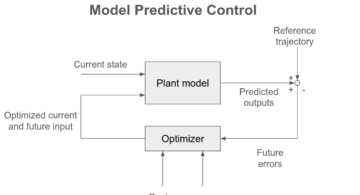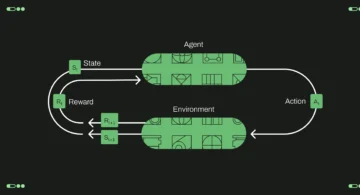Eyes, JAPAN
Unveiling the Hidden Superpowers of a System Analyst. More than Meets the Eye
Rumesh Weerakoon
Have you ever wondered why some software projects succeed while others fail spectacularly? There’s often a hidden hero behind the scenes making all the difference. When you hear “System Analyst” what comes to mind? You might picture someone buried in documentation, scribbling down requirements in endless meetings. But there’s so much more to this role. The “System Analyst”, this role is packed with hidden superpowers that go beyond the job description. Let’s dive in and explore the unseen impact of a System Analyst, with interactive elements along the way to test your knowledge.
In reality, System Analyst is a strategic thinker, a detective, a storyteller, and even a negotiator. They possess hidden superpowers that are crucial to project success yet often unnoticed.
1. The Strategic Visionary (Planning for success before starts)
A System Analyst is not just a note taker; they are strategic thinkers who acts as a bridge between business goals and technical execution. They expect potential roadblocks and plan to avoid project pitfalls. Their secret weapon? Is the ability to think strategically, aligning the project’s vision with actionable steps
Real-World Failure Story
A nationwide hospital scheduling system project had brilliant technical resources but failed because the analysts didn’t align the project’s vision with the actual needs of medical staff. The end product was so bulky that it was frequently bypassed in favor of simpler, manual systems. This costly mistake underscored the importance of strategic alignment.
2. The Master Negotiator (Balancing conflicting requirements)
They are like diplomats in software projects. They navigate conflicting interests, ensuring that the final solution meets the needs of all stakeholders. Their hidden superpower lies in their ability to negotiate effectively without compromising the core objectives of the project.
Real-World Failure Story
In one project, a cross-departmental initiative, conflicting requirements were not managed well, resulting in a solution that met no one’s needs. This led to widespread dissatisfaction and the project’s eventual cancellation.
3. The Detective (Uncovering hidden requirements)
System Analysts often play the role of a detective, piecing together clues to find hidden requirements that weren’t explicitly stated. They ask probing questions and dig into data to uncover issues before they become problems.
Real-World Failure Story
A logistics software project hit a major problem because the analysts didn’t dig deep enough. A crucial requirement involving different tax regulations for various regions was missing. So, it resulted in substantial revenue losses and an urgent fix.
4. The Advocate for Users (Supporting the best experience)
A hidden aspect of the System Analyst’s role is their focus on user experience. They often serve as the user’s advocate, making sure the final product is intuitive and meets real needs.
Real-World Failure Story
A retail app launched with great anticipation but quickly saw massive user drop-offs. The reason? The analysts hadn’t prioritized user feedback, leading to a layout that was far from natural. This oversight proved that user advocacy is not optional, it’s essential.
5. The Documentation Guru (Building a knowledge base)
System Analysts are often the guardians of documentation, creating a legacy of knowledge that carries on the project itself. Their work ensures that everyone from developers to future stakeholders understands the project’s history and rationale.
Real-World Failure Story
A complex software project faced a six-month delay when key analysts left the team. The lack of complete documentation forced new team members to spend weeks fixing together information that could have been readily available
Here is your chance
1
Scenario: You are in a meeting with stakeholders who want to launch a new e-commerce platform by the end of the quarter. The development team estimates that it will take at least six months.
Your Choice
- Agree with the stakeholders to keep them happy, and push the development team to meet the deadline.
- Suggest a phased rollout, starting with a minimum viable product (MVP) to meet the initial launch date while planning additional features for later.
- Defer the decision to the project manager and move on.
2
Scenario: You’re in a meeting with two stakeholders.
- Marketing wants a smooth, customizable product recommendation engine.
- Finance wants to prioritize security features due to recent data breaches.
How do you proceed?
- A: Implement both features to satisfy both teams, even if it increases the project scope.
- B: Suggest focusing on the security features first, as they address a critical issue.
- C: Facilitate a discussion to understand the core needs behind each request and find a balanced solution.
3
Scenario: You are reviewing user feedback for a new online registration system. Users are frustrated that they can’t sign up with certain email providers, but this issue wasn’t mentioned in the requirements. Suppose below are clues.
- Users report errors only when using company email domains.
- The error log shows a conflict with the email validation script.
Where do you look first to solve the issue?
- Check the email validation script for domain specific rules.
- Consult the user interface engineer assuming it might be blocking certain inputs.
- Ignore the issue and forward it to the development team.
4
Scenario: Client says they need a report generating feature for monthly sales. However, after interviewing the sales team, you learn they actually struggle with analyzing daily trends.
What would you suggest?
- A. Stick to the monthly report requirement.
- B. Propose adding a daily sales trend dashboard.
- C. Suggest a weekly sales report instead.
5
Scenario: Your project has gone through several changes, and different team members have employed. The client asks why a certain feature was implemented, but the developer who made the decision is no longer available.
How can you best handle this situation?
- A. Tell the client that you are unsure and try to figure it out later.
- B. Refer to the project documentation where the decision recorded.
- C. Guess the reason based on your understanding of the project.
You have completed the Q&A scenarios. Now, let’s see how well you understand the hidden roles of a System Analyst.
Discover Your Own Hidden Superpowers
You’ve explored the secret world of System Analysts and uncovered their hidden talents. Whether it’s strategic thinking, negotiation, detective work, user advocacy, or detailed documentation, these skills are crucial to any project’s success.
 2025/12/12
2025/12/12 2025/12/07
2025/12/07 2025/11/06
2025/11/06 2025/10/31
2025/10/31 2025/10/24
2025/10/24 2025/10/03
2025/10/03 2025/08/30
2025/08/30 2025/08/22
2025/08/22